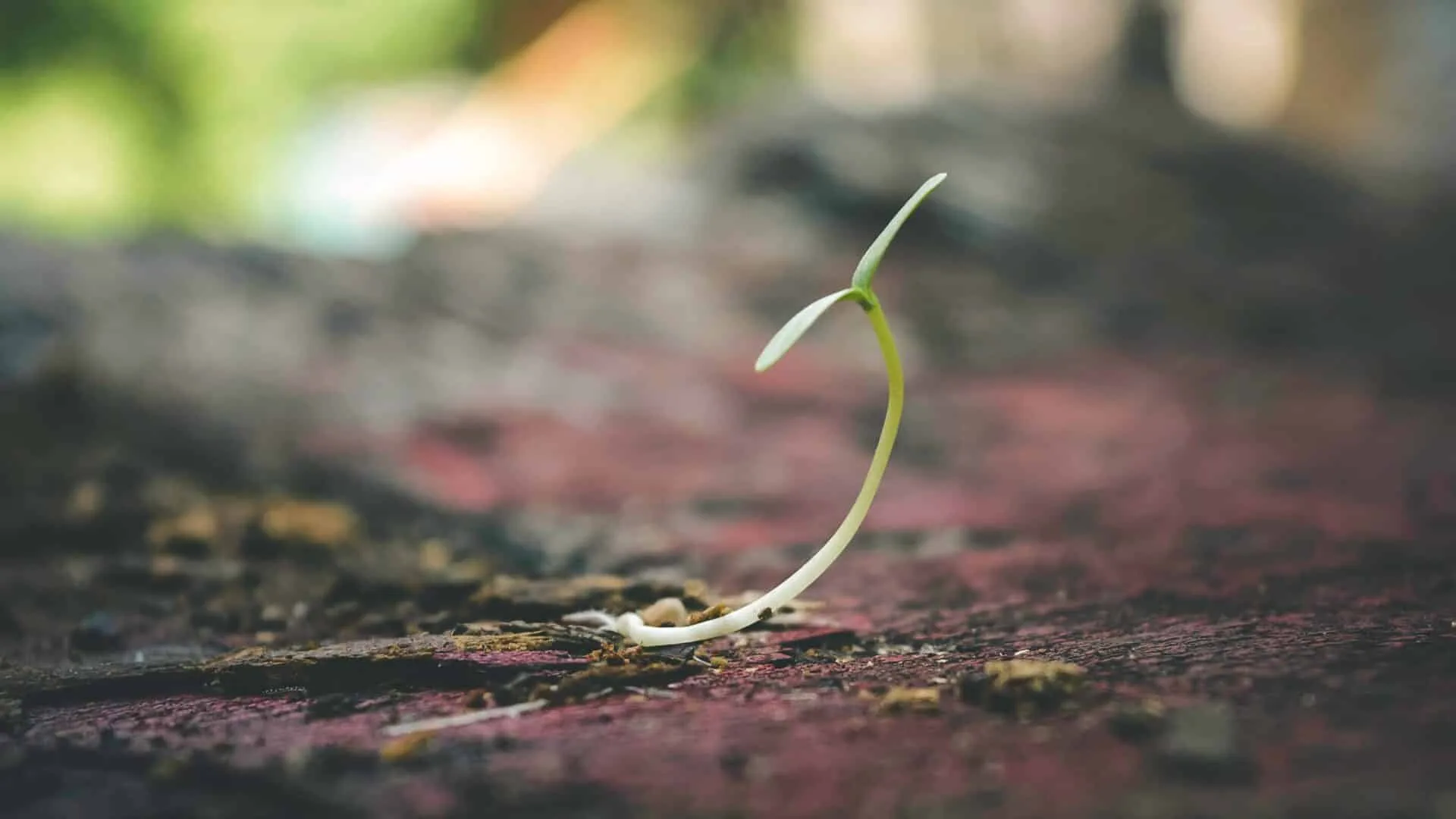Growing pineapple from seed is a fun and rewarding process. Pineapple is a tropical fruit and therefore requires warm temperatures and plenty of sunlight to thrive. While it can take several years for the pineapple plant to bear fruit, the process of growing your own pineapple can be an enjoyable one. In this guide, we will provide you with the instructions for how to grow your own pineapple seeds.Collecting pineapple seeds from a ripe pineapple is fairly simple. First, cut off the crown of the pineapple, which is the spiky green top of the fruit, and set it aside. Then slice off the skin of the pineapple and cut it into manageable chunks. Once you have cut up your pineapple, you can scoop out the seeds from inside the fruit. They are small and black and can be difficult to find in amongst all of the pulp. When you have collected all of your seeds, rinse them under cold water to remove any traces of juice or pulp. Pineapple seeds can then be dried on a paper towel or a kitchen cloth until they are completely dry before storing them in an airtight container at room temperature for future use.
Preparing Pineapple Seeds for Planting
Planting pineapple seeds is an easy and fun way to grow your own pineapples. Before planting the pineapple seeds, it is important to prepare them properly. The first step in preparing pineapple seeds for planting is to remove the flesh of the fruit from the seeds. This can be done by cutting the pineapple in half and then carefully removing the flesh from each seed. Once all of the flesh has been removed, it is important to rinse the seeds in water to remove any remaining pieces of fruit.
After rinsing, the pineapple seeds should be dried completely before planting. This can be done by placing them on a paper towel and allowing them to air dry or by using a fan on a low setting. Once dry, the pineapple seeds are ready for planting!
Before planting, it is important to ensure that the soil is well-drained and has adequate drainage. It is also important to make sure that there are no weeds present in the soil before planting as this can inhibit germination of the pineapple seeds. It is recommended that fertilizer be added to provide additional nutrients for optimal growth of your pineapple plants.
Once your soil is prepared and your pineapple seeds are dry, you can begin sowing your pineapple plants! To sow your pineapple plants, simply place one or two pineapples seeds into a hole dug into moist soil at least 1/2 inch deep and cover with soil. Make sure that you keep these holes moist until germination occurs which usually takes about 2-3 weeks depending on conditions such as temperature and sunlight exposure. After germination occurs, you can begin caring for your young pineapple plants as they grow!
Planting Pineapple Seeds
Pineapple is a delicious and sweet fruit that grows in tropical climates. It is also a great source of vitamins and minerals. Growing pineapples from seed is an exciting project that can be done with very little effort. To get started, you will need to gather the right supplies and prepare the soil for planting. Here are some tips on how to plant pineapple seeds.
The first step is to collect the seeds from ripe pineapples. Cut the pineapple in half, then scoop out the seeds with a spoon. Make sure to remove any pieces of pineapple flesh that may be stuck to the seeds as they can cause rotting if left on. Once you have collected all the seeds, rinse them under cool running water and let them dry completely.
Next, it’s time to prepare the soil for planting. Pineapple plants prefer well-draining soil with a pH between 5 and 6.5. If your soil does not meet these requirements, you may want to add compost or peat moss to improve drainage and acidity levels. Once you have prepared the soil, it’s time to sow your seeds.
To sow your pineapple seeds, fill individual pots or seed trays with damp potting soil and place one seed in each container. Cover with a thin layer of potting mix, then water lightly and cover with plastic wrap or a humidity dome to keep in moisture. Place your pots or seed trays in an area that gets plenty of bright indirect sunlight each day.
It can take several weeks for your pineapple plants to emerge from their seed coats so be patient! Once your plants have sprouted, remove any plastic wrap or humidity domes and continue providing regular watering until they are established. When they reach about 8 inches tall, you can begin fertilizing monthly with a balanced liquid fertilizer.
Growing pineapples from seed can be rewarding but it does require patience! With proper care and attention, you can grow healthy plants that will produce sweet fruit for years to come!
Best Soil for Growing Pineapple Seeds
Growing pineapple plants from seeds is an enjoyable and relatively easy process. It is important to choose the right kind of soil in order to ensure the pineapple plants have the best chance of thriving. The ideal soil for growing pineapple seeds should be well-draining, rich in organic matter, and slightly acidic.
When selecting a soil for growing pineapple plants, make sure it is light and airy and contains a good blend of perlite, compost, peat moss, sand, and manure. This type of soil will provide plenty of drainage while also retaining some moisture to keep your plants hydrated. Additionally, adding some fertilizer will help promote growth and healthy fruit production.
The pH level of the soil should also be taken into consideration when selecting a soil for growing pineapple plants. The ideal pH range for pineapple plants is between 5.5 and 6.5. If your soil’s pH level falls outside this range, you can adjust it by adding lime or sulfur to bring it within the desired range.
Once you have chosen the ideal soil for growing pineapple seeds, you will need to prepare it prior to planting. This involves loosening any compacted areas with a garden fork and adding compost or manure to increase its fertility levels. You can then add water until the top few inches are moistened before planting your seeds in individual containers filled with the prepared soil mix.
It is also important to keep the soil consistently moist but not saturated throughout the plant’s growth cycle as this will ensure they receive adequate hydration while not becoming waterlogged or suffering from root rot due to over-watering. Once established, your pineapple plants should continue to thrive for many years if given proper care and attention.
Watering Pineapple Seeds
Watering pineapple seeds is an important step to ensure successful germination of the seeds. The seeds should be watered regularly in order to keep the soil moist and prevent it from drying out. It is important to not over water the seeds, as this can cause rot. The best way to water pineapple seeds is to use a spray bottle or misting bottle, which will help keep the soil moist without saturating it. The seeds should be sprayed or misted lightly every few days, or as needed depending on the humidity and temperature in the environment. It is also important to note that pineapple seeds require a warm, humid environment in order to germinate successfully. If the air is too dry or too cold, then it may take longer for the seeds to germinate.
When watering pineapple seeds, make sure that you don’t oversaturate the soil. Too much water can cause root rot and other problems that can prevent successful germination of the seeds. You should also avoid standing water around the plant, as this can create an environment that encourages fungal growth and other problems. Make sure that you are using a light spray or mist when watering your pineapple seedlings as too much pressure from a regular hose can damage the fragile seedlings.
It is also important to note that pineapple plants need lots of light in order for them to thrive. If you are growing your seedlings indoors, then make sure that they are getting plenty of sunlight throughout the day. If you are growing them outdoors, then make sure they are getting at least 6-8 hours of direct sunlight each day in order for them to reach their full potential.

The Best Temperature and Light Conditions for Growing Pineapple Seeds
Growing pineapple seeds can be an enjoyable project, but it is important to create the optimal conditions for the seeds to thrive. The best temperature for pineapple seed germination is between 70 and 80 degrees Fahrenheit. Pineapple plants also need plenty of bright light in order to grow, so it is best to place them in an area with direct sunlight or near a bright window. In order for pineapple plants to survive, they need 12-14 hours of light each day. It is also important to ensure that the soil remains moist, but not overly wet, as this can lead to root rot and other diseases. When watering, make sure that you use lukewarm water as cold water can shock the roots and prevent growth. Lastly, it is important to keep the area around the plant free from weeds and debris as this will help ensure that your pineapple plants have all of the necessary nutrients and resources needed for healthy growth.
Creating the ideal environment for growing pineapple seeds will take some effort but with proper care and attention, you should be able to enjoy a bountiful harvest in no time!
What to Do When the Seedlings Appear
Once the seedlings have emerged from the soil, it is important to ensure they receive the right amount of water, light, and nutrients. Watering should be done on a regular basis, making sure to avoid over-watering or under-watering. If the soil is too dry, the seedlings will wilt and die. It is also important to provide adequate light for seedling growth. If the seedlings are not getting enough light, they will become spindly and weak.
When it comes to fertilizing seedlings, a balanced fertilizer such as 10-10-10 should be used. This type of fertilizer contains equal parts of nitrogen, phosphorus, and potassium which are essential for healthy plant growth. Fertilize at least once every two weeks during active growth periods and follow package instructions for application amounts.
Finally, it is important to monitor for any pest problems that may arise in your seedling garden. Common pests such as aphids or whiteflies can quickly damage young plants if left unchecked. Treat these pests with an appropriate insecticide or organic solution as soon as you notice them in order to protect your seedlings from further damage.
Caring for Young Pineapple Plants
Caring for young pineapple plants is a rewarding and enjoyable experience. Pineapple plants require very little maintenance and can provide an abundance of sweet, delicious fruit when properly cared for. In order to get the most out of your pineapple plant, it’s important to provide it with the right environment and proper care. Here are some tips on caring for young pineapple plants.
First, choose a location that gets plenty of sunlight and has well-drained soil. Pineapple plants need at least six hours of direct sunlight each day in order to grow and produce fruit. Make sure the soil is not too wet or dry; it should be kept consistently moist but not soggy.
Second, fertilize your pineapple plant regularly with a balanced fertilizer such as 10-10-10 or 8-8-8. This will help ensure the plant receives all the nutrients it needs to grow healthy and strong. A slow-release fertilizer is also an option if you want to save yourself from having to fertilize every few weeks or months.
Third, water your pineapple plant regularly but don’t overdo it; too much water can lead to root rot and other diseases. Watering once a week should be enough if the soil isn’t too dry or if there hasn’t been much rainfall recently. If you’re unsure when to water, stick your finger in the soil; if it’s dry about an inch below the surface, then it’s time to water.
Finally, mulch around your pineapple plant with organic material such as straw, hay or leaves. This will help keep weeds away and retain moisture in the soil which will benefit your plant in multiple ways. With these simple tips in mind, you’ll be able to easily care for your young pineapple plant and enjoy its delicious fruit!

Conclusion
Growing pineapple is a fun and rewarding experience. Once the seeds have germinated, they can be transplanted into individual pots and grown on until it’s time to move them outdoors or into their permanent home. The best way to grow pineapple from seed is to make sure the soil is well-draining, the temperature is within optimal range, and the seeds have access to full sun. With patience and care, you can successfully grow a healthy pineapple plant from seed.
As with any other type of gardening, there are no guarantees that your pineapple plant will bear fruit. However, with proper growing conditions and plenty of love and attention, you may just be rewarded with a sweet pineapple fruit in a few years’ time.



